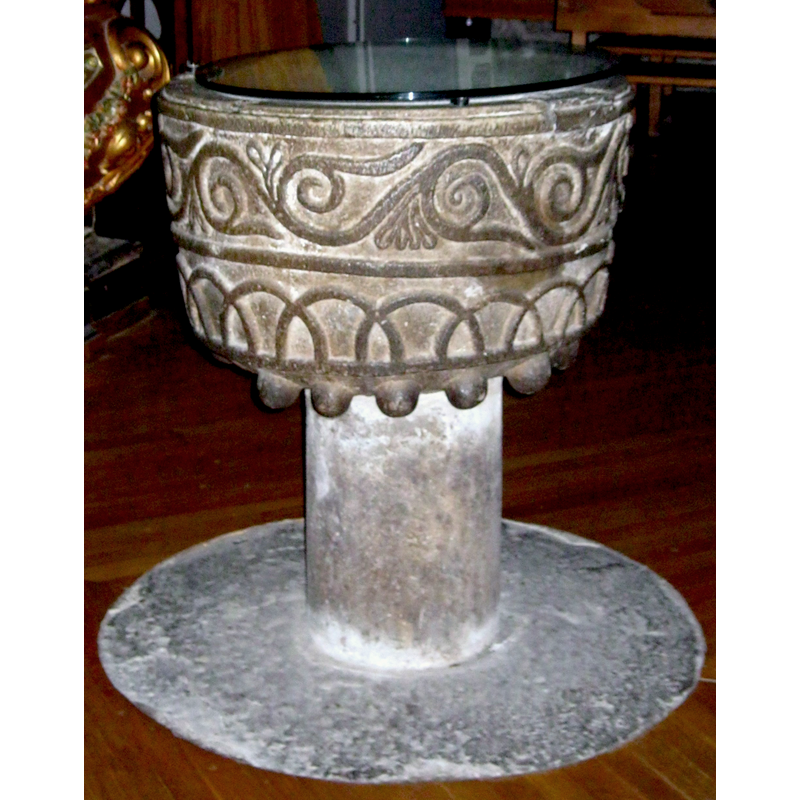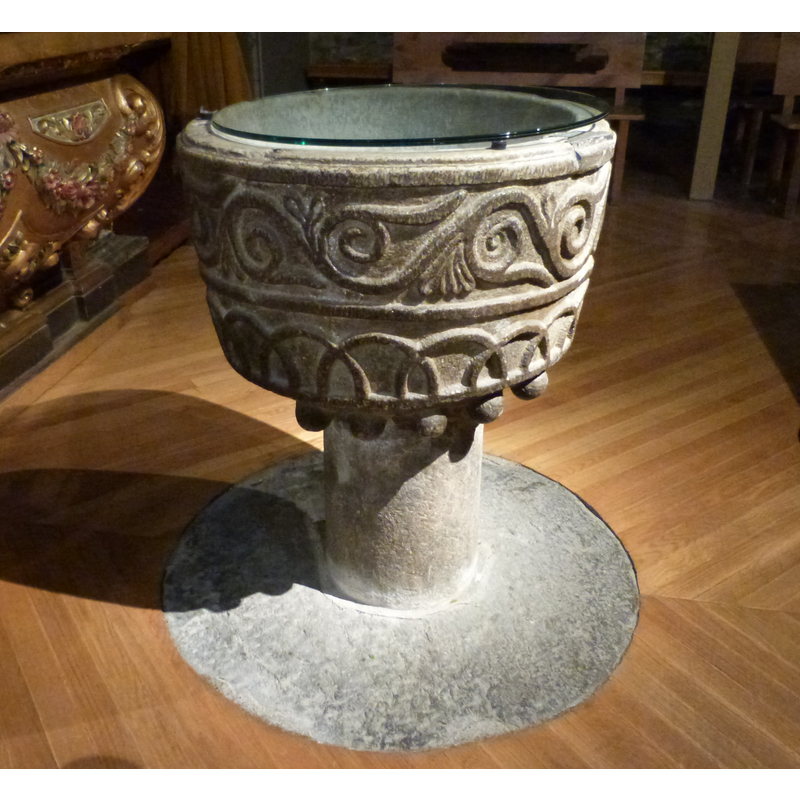Vielha No. 1 / Viella
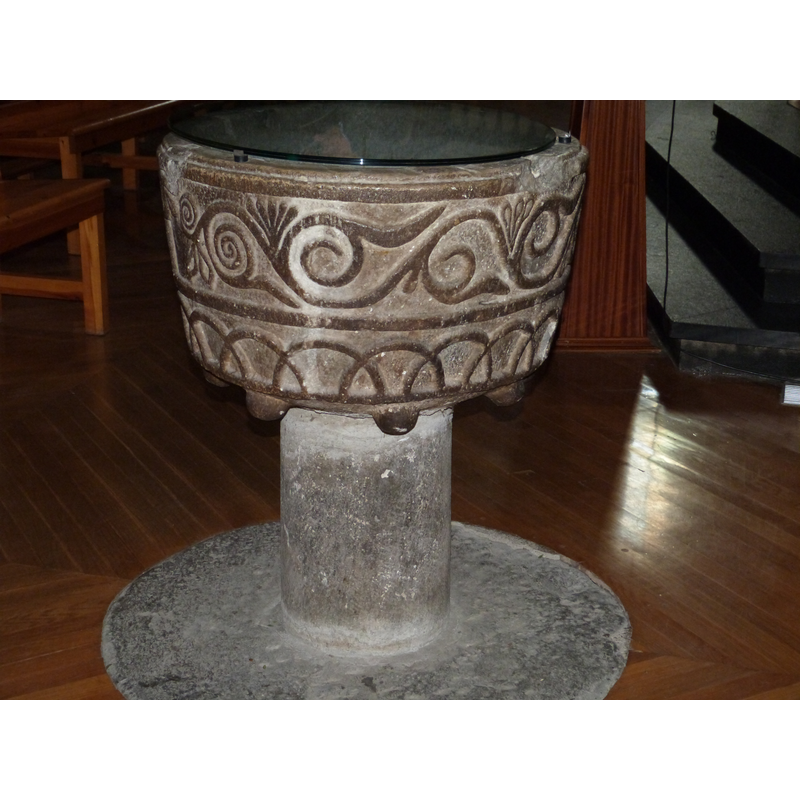
Image copyright © Txaro Irigoyen, 2015
Image and permission received via Mikel Unanue (e-mail of 29 May 2015)
Results: 12 records
design element - architectural - arch-head - round - intersecting
design element - motifs - ball
design element - motifs - vine - acanthus
view of church exterior - north portal
view of church exterior - northwest view
view of church interior - crucifix - detail
Scene Description: Source caption: "Le buste du Christ de Mijaran, en bas à droite la main de Joseph d'Arimatie soutenant le corps du Christ lors de la descente de croix."
Copyright Statement: Image copyright © Daniel Villafruela, 2010
Image Source: digital photograph taken 14 July 2010 by Daniel Villafruela [http://commons.wikimedia.org/wiki/File:Vielha-Sant_Miquèu-Crist_de_Mijaran_1.jpg] [accessed 7 June 2015]
Copyright Instructions: CC-BY-SA-3.0
view of church interior - retable
Scene Description: Source caption: "The Gothic altarpiece of the high altar of Saint Michael of Vielha date from the fifteenth century. It is attributed to the "Master of Vielha", still anonymous, who seems to be a disciple of Pedro García de Benavarre, who worked in Barcelona, Lleida and Huesca [...] The central panel and the three on top left illustrate the legend of Saint Michael. Those of right corner depict scenes from the life of the Virgin Mary. Below Saint Michael panel is representrd the Last Supper. On each side are represented the apostles St. Peter and St. Paul."
Copyright Statement: Image copyright © Daniel Villafruela, 2013
Image Source: digital photograph taken 2 August 2013 by Daniel Villafruela [http://commons.wikimedia.org/wiki/File:Vielha_e_Mijaran-Glèisa_Sant_Miquèu-Retaule.jpg] [accessed 7 June 2015]
Copyright Instructions: CC-BY-SA-3.0
view of font
view of font
view of font
view of font
INFORMATION
FontID: 02228VIE
Object Type: Baptismal Font1
Church/Chapel: Sant Miquèu / Sant Miquel de Vielha
Church Patron Saints: St. Michael
Country Name: Spain
Location: Lérida / Lleida, Cataluña / Catalunya
Directions to Site: Vielha is the capital of the Vall d'Aran. Sant Miqueu is located in the town centre
Historical Region: Valle de Aran / Vall d'Aran / Alt Pirineu i Aran
Font Location in Church: Inside the church
Century and Period: 12th - 13th century, Romanesque
Cognate Fonts: Betlan and Montcorbau, also in the Val d'Aran
Credit and Acknowledgements: We are grateful to Merçé Rota Serra and Txaro Irigoyen for their photographs of this font
Church Notes: church here 12th-13thC -- "Beautiful 'Crist de Mijaran', XII century from the hermitage of the same name ... impressive Gothic altarpiece from the 15thC, work of the 'Mestre de Vielha' " (ACTUR, 1999, p.4)
Font Notes:
Click to view
Enlart (1902) mentions a 13th-century font in Viella referring to this font. Durliat (1978) states that this font may come from the same source as the Romanesque Christ kept in the Viella church. Two articles in Catalunya romànica (1984- ), on this font: the first emphasises the dexterity and accuracy of the carving on this font, in contrast with the more crude and rudimentary level found in most other fonts in the valley; the second article states that the two pieces of the base do not belong to the original font and goes on to ellaborate about the style of the ornamentation; with respect to the dating, the second article cites Sarrate i Forga's El arte romànico en el Mig-Aran (Lleida, 1975) as source for a chronology dating it to the 12th century, though the author states a preference for a later dating, the first half of the 13th century ["nosaltres creiem, però, que pot tractar-se d'una data més tardana [...] de la primera meitat del segle XIII"], therefore in agreement with Enlart's (1902) dating. [NB: Sarrate i Forga is keener on early dates for all the Aran fonts, especially the 'oil-fonts' which he dates to the 10th-11th century as predecessors of the Romanesque fonts such as this one]. Noted in Amiell (2007). On-site notes: the basin has a negligeable rim; below it, the side is divided into two ornamentation registers: the upper has a well-drawn vegetal vine/garland; the lower has intersecting round arches; the bottom edge of the basin is decorated with large protruding ball motif. The stem of the base is a plain cylindrical column and the plinth is circular and plain as well.
COORDINATES
Church Latitude & Longitude Decimal: 42.702789, 0.796058
Church Latitude & Longitude DMS: 42° 42′ 10.04″ N, 0° 47′ 45.81″ E
UTM: 31T 319493 4730166
MEDIUM AND MEASUREMENTS
Material: stone, marble (grey) (local)
Number of Pieces: two
Font Shape: cylindrical (mounted)
Basin Interior Shape: round
Basin Exterior Shape: round
Rim Thickness: 7 cm
Diameter (inside rim): 57-58 cm
Diameter (includes rim): 71-72 cm
Basin Depth: 35 cm
Basin Total Height: 45 cm *[43 cm]
Height of Base: 45 cm *[46 cm]
Font Height (less Plinth): 90 cm
Font Height (with Plinth): 103 cm
Notes on Measurements: BSI *[Catalunya romànica (1984-, v. XIII: 408)]
REFERENCES
ACTUR (www.actur.com/romai.htm], 1999. [URL discontinued / non active].
Amiell, Josep M., "Piques baptismal de la Val d'Aran", 21 (agost-setembre 2007), Taüll, 2007, pp. 32-35; p. 32
Durliat, Marcel, Pyrénées romanes, La Pierre-qui-vire, Yonne: Zodiaque, 1978
Enlart, Camille, Manuel d'archéologie française depuis les temps mérovingiens jusqu'à la Renaissance, Paris: Alphonse Picard & fils, 1902
Fundació Enciclopèdia Catalana, Catalunya romànica, Barcelona: Fundació Enciclopèdia Catalana, 1984-
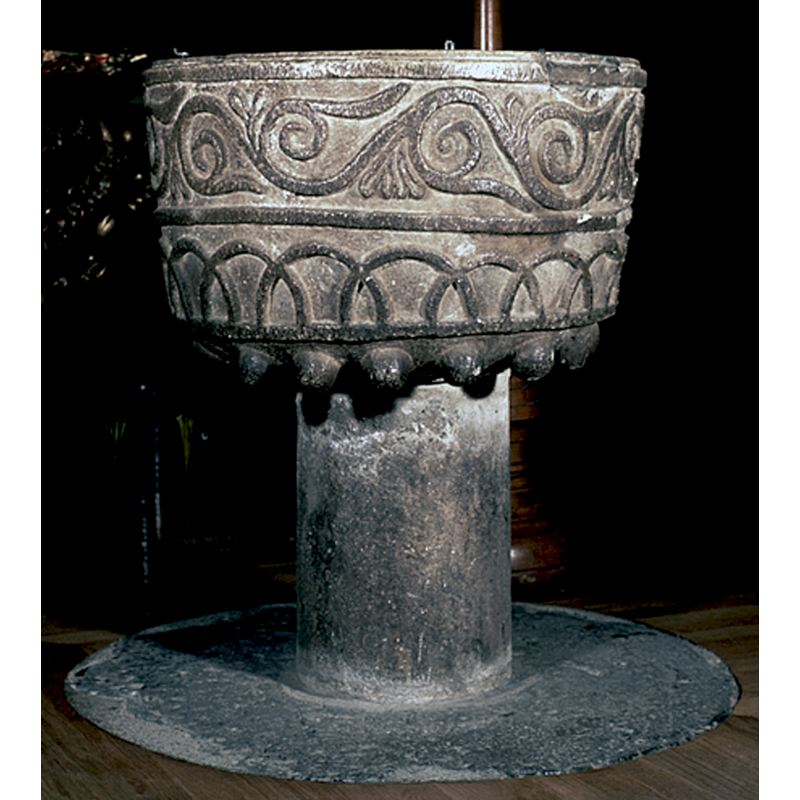
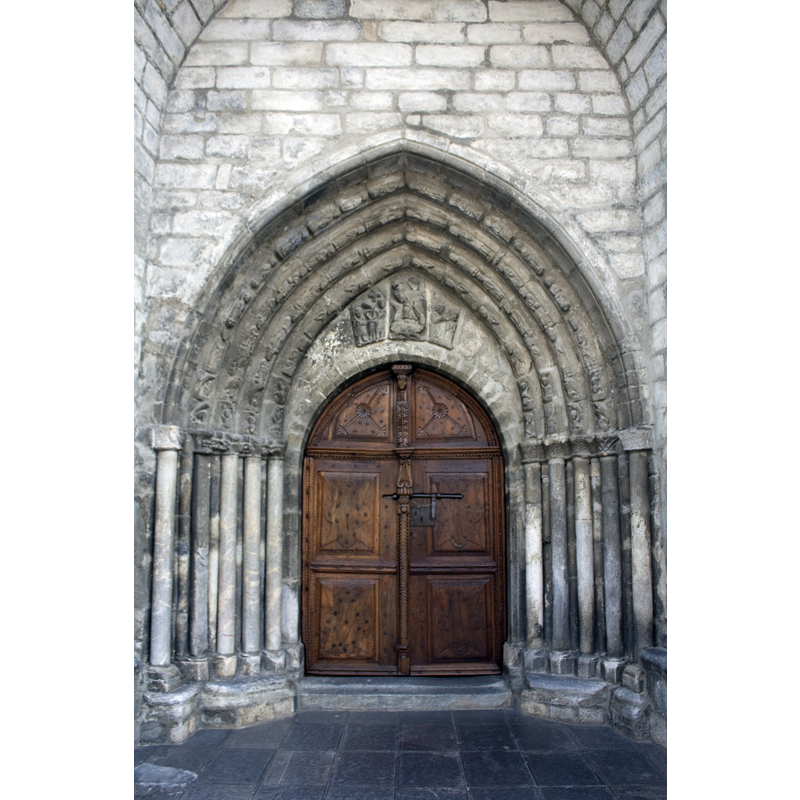
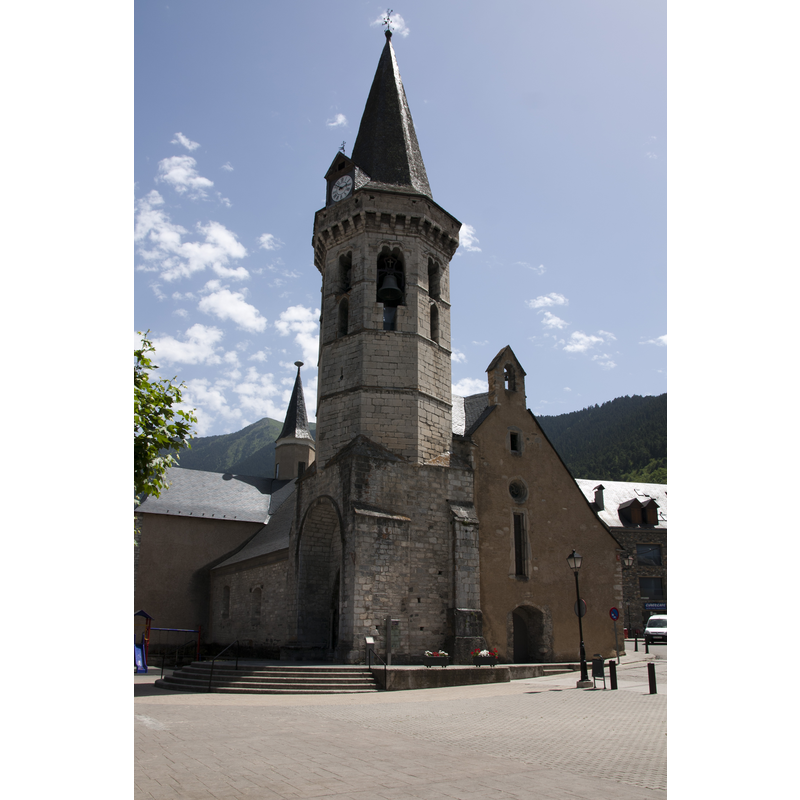

![Source caption: "The Gothic altarpiece of the high altar of Saint Michael of Vielha date from the fifteenth century. It is attributed to the "Master of Vielha", still anonymous, who seems to be a disciple of Pedro García de Benavarre, who worked in Barcelona, Lleida and Huesca [...] The central panel and the three on top left illustrate the legend of Saint Michael. Those of right corner depict scenes from the life of the Virgin Mary. Below Saint Michael panel is representrd the Last Supper. On each side are represented the apostles St. Peter and St. Paul."](/static-50478a99ec6f36a15d6234548c59f63da52304e5/compressed/1150607010_compressed.png)
